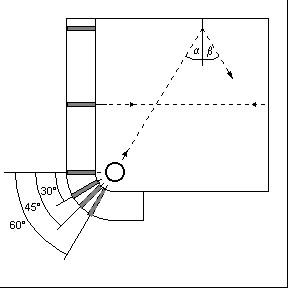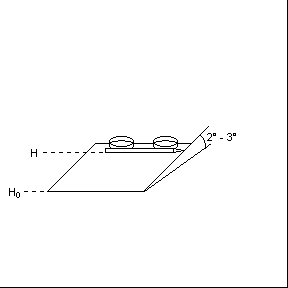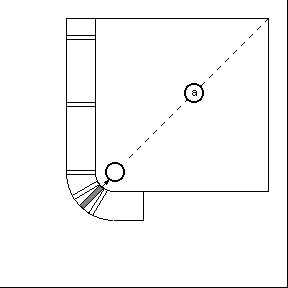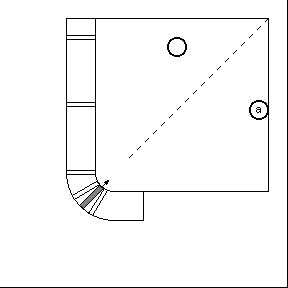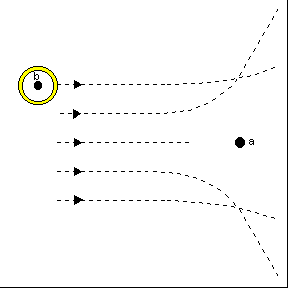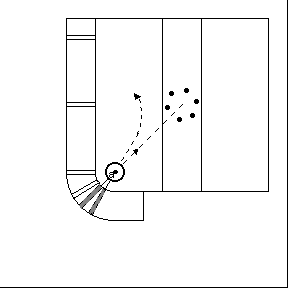M.6.5 Projection Air Table
This beautiful piece of equipment operates on the overhead projector and has pucks of three different masses, a catapult to project them, magnets to make them attractive or repulsive, and metal strips to make them into dumbbells.
One of the most interesting demonstrations is the elastic, oblique collision. If the pucks are of equal mass, the laws of conservation of energy and momentum guarantee that the paths of the two pucks after collision form a right angle. This can be shown by cutting off the air supply before the pucks reach the edge of the table. Their positions and paths can then be marked out with a felt tipped pen.
This and other demonstrations are shown below.
6.5.1 Law of Reflection
6.5.2 Inclined Plane
6.5.3 Collision Experiments
I. Elastic, Central Collision
II. Elastic, Oblique Collision
6.5.4 Model experiment on Rutherford scattering
6.5.5 Model experiment on nuclear capture
Set up as shown below; set the catapult's end-stop to give a medium length of travel of the plunger. Arrange cylindrical magnets as shown below on the acrylic glass plate with the same polarity and secure them by means of some adhesive tape.
Place a toroidal magnet on the moving puck (a) in such a manner that it is repelled when it reaches the vicinity of the cylindrical magnets.
Result:
If the energy of collision is sufficient, and the axis of motion passes through the center of the circle of cylindrical magnets, the colliding puck can penetrate into the interior of the "nucleus" (i. e. the circular arrangement of cylindrical magnets shown in fig. 9).
